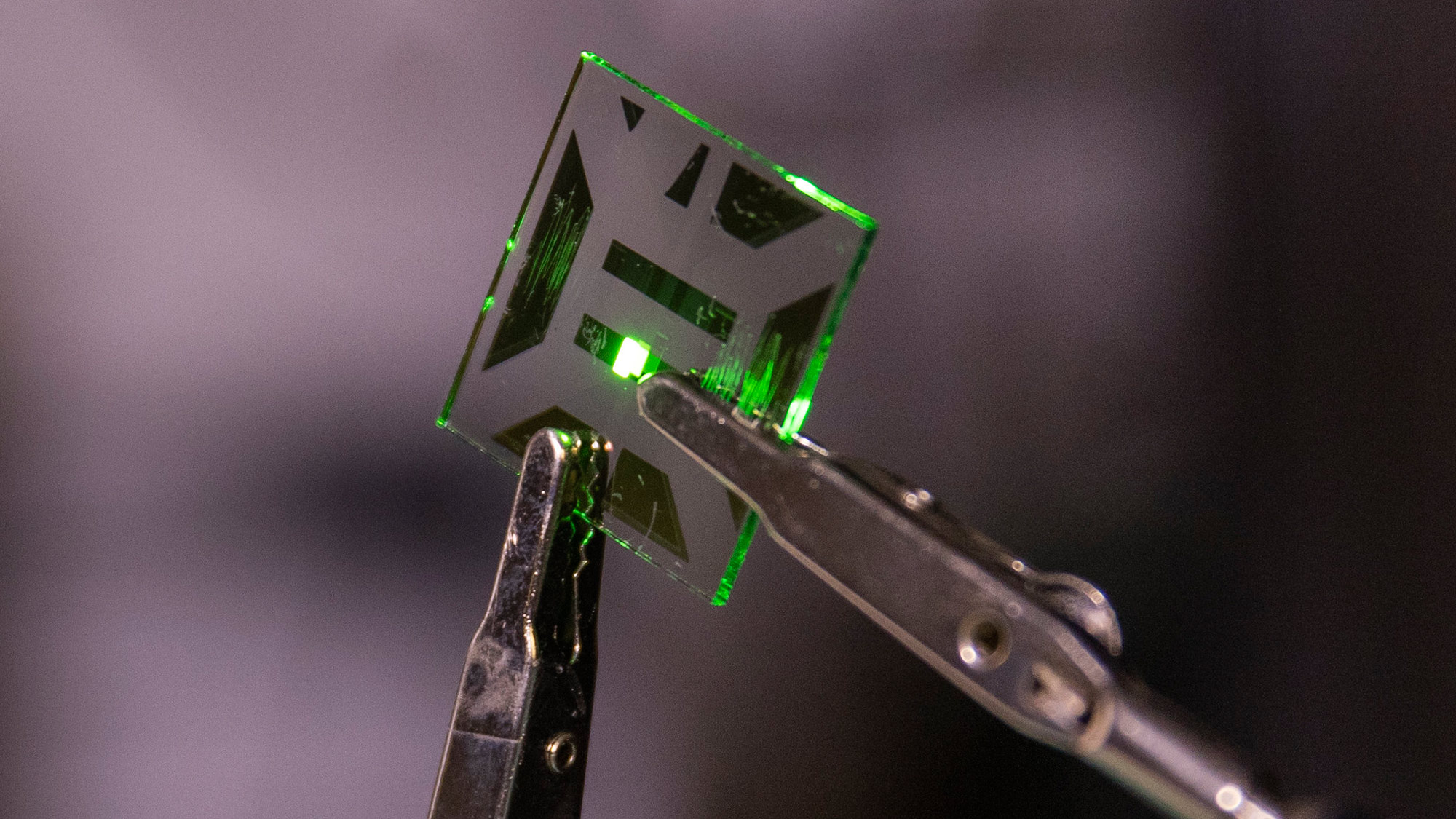OLED nanotech breakthrough could deliver brighter TVs — and longer-lasting phones
A new diode design could revolutionize OLED displays, making for brighter OLED TVs and longer battery life on laptops and phones

A new breakthrough in electrode design could be the answer for brighter OLED TVs and displays and better battery life for laptops and phones. Thanks to a nanotech refinement of the light-emitting portion of OLED (organic light-emitting diode) displays, the new electrode design can deliver up 20% more light using the same power input.
The new electrode design doesn't produce more light, but it does improve the emission of that light. According to a blog post from the University of Michigan, the new approach prevents light from being trapped in the light-emitting part of the diode.
- Tested and reviewed: The best TVs you can buy
- TV buying guide: 9 things you need to know
- Plus: Own an LG OLED TV? Get this update for HDR gaming now
Current diode designs used in OLED TVs and display panels can trap as much as 80% of the light generated by a light-emitting diode, with only the light that exits the device at a near perpendicular angle being projected toward the viewer, and the rest reflecting back into the device.
According to L. Jay Guo, one of the paper's authors and a professor of electrical and computer engineering at the University of Michigan: “We want to address the root cause of the problem.”
The new design does just that, as detailed in a paper published in Science Advances. Using a nanoscale layer of transparent silver in the anode instead of the conventional indium tin oxide, as much as 20% of that trapped light is now liberated, driving more of the light directly out of the light emitting diode toward the viewer. This provides a brighter, and more vibrant display without requiring higher power consumption.
More improvements may be seen as the new design goes into manufacturing. According to Changyeong Jeong, co-author of the paper and a Ph.D. candidate in electrical and computer engineering at University of Michigan, “Industry may be able to liberate more than 40% of the light, in part by trading the conventional indium tin oxide electrodes for our nanoscale layer of transparent silver."
Even better, this new process doesn't require completely changing how OLED displays are manufactured, since the energy-efficient design can be fit into existing OLED manufacturing processes. “With our approach, you can do it all in the same vacuum chamber,” said Guo.
Sign up to get the BEST of Tom's Guide direct to your inbox.
Get instant access to breaking news, the hottest reviews, great deals and helpful tips.
Brighter light-emission from OLED displays would solve one of the long-standing problems faced by OLED TVs and panels, namely a general dimness when compared to backlit technologies like LED TVs.
As high-dynamic range (HDR) formats have become more popular in TV and phones, device manufacturers have taken steps to improve the brightness the panels produce by overdriving the panels, resulting in shorter usable life for OLED panels and increasing the risk of burn-in.
While no announcements have been made regarding industry adoption of the new technology, the manufacturing-readiness of the new diode design and the promises of improved efficiency would make the improvements very attractive to device makers. The University of Michigan has filed for patent protection of the new technology.
Brian Westover is currently Lead Analyst, PCs and Hardware at PCMag. Until recently, however, he was Senior Editor at Tom's Guide, where he led the site's TV coverage for several years, reviewing scores of sets and writing about everything from 8K to HDR to HDMI 2.1. He also put his computing knowledge to good use by reviewing many PCs and Mac devices, and also led our router and home networking coverage. Prior to joining Tom's Guide, he wrote for TopTenReviews and PCMag.

